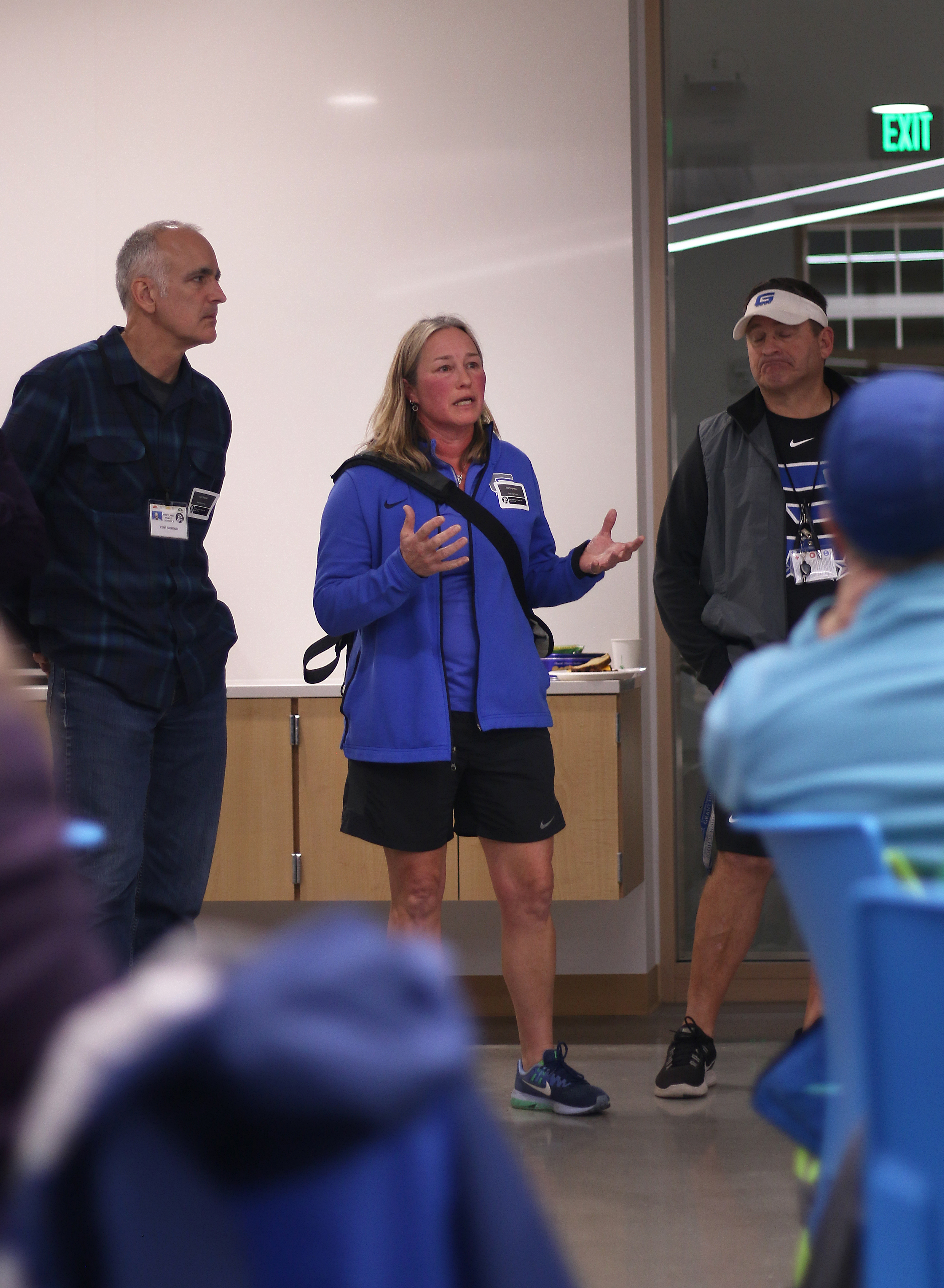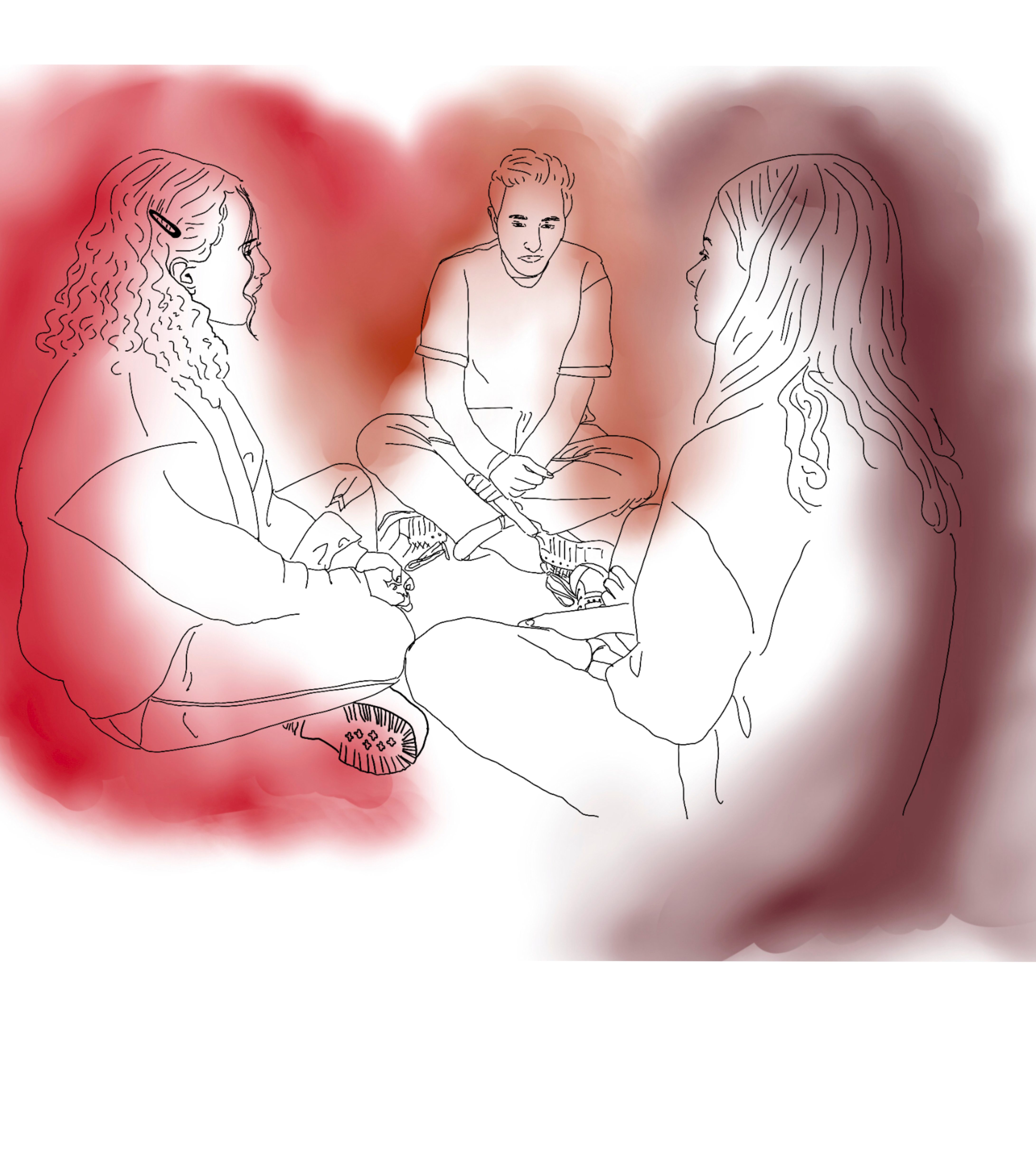
When the bell rings at 3:30 p.m., then-freshman Mia Ewell hurries out of class to meet her sister at her car so they can beat the rush hour traffic on their way to varsity softball practice. While most varsity athletes at Grant get ready for practice in the on-campus locker rooms, Ewell hurriedly changes into her practice clothes in the car as her sister drives the mile to Wilshire Park, where the softball teams practice. Softball players who are not able to drive or get a ride to Wilshire take public transportation to the field. When all the softball players are assembled, practice can begin, usually about 15 or 20 minutes later than the scheduled 4:00 p.m.
To Ewell, the commute to Wilshire is frustrating, especially because the baseball team has a practice facility on the Grant campus. The facilities at Wilshire, which are created for Little League and are not regularly maintained, make it difficult for high-school-level players to practice. While Wilshire is a regulation softball field, it is too small for the varsity and junior varsity teams to practice safely at the same time. The teams frequently have to stop playing while a foul ball is retrieved. When players have to use the bathroom, they usually wait until after practice, as the park bathroom is far from the field and often locked.
For the subsequent two years, Ewell and her teammates attend school at the Marshall campus, where Grant High School is located while the Grant campus is being remodeled. Softball practices are held in the Grant Bowl—the turf field used for soccer and football at the Grant campus. This prevents the softball teams from having to share the Marshall turf field with the track and field team. While they practice, the softball players watch a new baseball field being constructed next to them on the Upper Field as part of the Grant renovation.
When the Grant renovation plans were initially created, they included plans for both updated softball and baseball fields on the Grant campus. However, because of concerns with space, weekend use and overlap with the community dog park, the softball field was ultimately left out of the renovation. The newly renovated Grant campus does not currently provide an area for softball practices and games. This spring, the softball teams will likely practice in the Grant Bowl, according to Grant principal Dr. Carol Campbell.
“We want to maintain what we’ve been doing (for the past two years), which is having them on turf just like baseball,” says Campbell. In the Bowl, softball will have to coordinate practices and share the facility with Grant’s track and field team. Meanwhile, the varsity baseball team will practice on a new regulation baseball field located directly outside the Grant building on the Upper Field.
Two years ago, the Grant softball teams advocated for the inclusion of a softball field in the modernization, arguing that not including one in the renovation plans violated Title IX, the federal statute which prohibits discrimination based on sex in any federally funded or educational activities.
“If the boys can have a nice, playable field at the school, we should be able to have that too. Why choose the boys and not us, you know? It would be the same problem … if we had a softball field but the baseball players didn’t have one,” says Ewell.
“We’re always trying to provide equitable facilities for all of our sports teams, but we are limited by other things too, just like the fact that we don’t have 50 acres where we can just, you know, have a field,” says Campbell. According to Campbell, the architects for the Grant remodel evaluated multiple sites to locate the softball field. The main areas under consideration were the public park area between the Grant parking lot and Hollyrood School, and the Upper Field. The design team deemed both areas too small to accommodate a regulation softball field. “We only have so much room. But I think we do recognize that we’ve got, you know, a men’s baseball program that varsity … does play on site, and we have a women’s varsity softball program that has traditionally played off site,” says Campbell.
During the protests, softball teams wore shirts that said “Where’s our softball field?” on the front and “Title IX” on the back to raise awareness about their concerns.
Junior Madyson Roach, who was a freshman at the time, felt that facilities for a softball field were treated as less of a priority than those for other sports, including baseball. “It’s a girls’ sport and girls’ sports are looked at as less than men’s sports,” says Roach, who has played on the varsity softball team since her freshman year. “They obviously show that that’s a reason why, and that’s kind of sad.”
However, according to the design team for the Grant renovation, it was impossible to include a softball field in the original renovation plans. The softball field was eventually removed from the remodel bond. “It wasn’t going to work size-wise, and it wasn’t going to work in terms of having a comparable facility like baseball,” says Campbell. “We took it out of the plans with the idea that we would pursue something different for that.”
This year, the school district hired Bora Architects to develop a design plan and analyze cost for a renovation of the Grant Bowl. They began working with Portland Public Schools (PPS) and Portland Parks and Recreation to create a master plan for the renovation—a project with a primary goal of developing a softball field on the Grant campus.
Stephen Weeks, who is Principal at Bora Architects and the leader of the Grant Master Planning Advisory Group, says that the group’s designs aim to provide a softball field that is similar to the facility provided for the new baseball field. “We want to make sure that everything for the softball field has the same accommodations,” he says.
This recent advancement prompts questions about why a plan to include a softball field was not previously created and included in the original renovation budget.
“I was certainly talking about it, my softball people were certainly talking about it, our principal was certainly talking about it,” says Deborah Engelstad, the Grant softball coach and a Grant teacher, of the planning for a softball field during the Grant renovation. “There was just no action … I think that at least in my career for Portland Public Schools, change takes a long time … We talk about it, (but) there’s no forward movement.”
According to Engelstad, who has coached softball at Grant for 34 years, advocacy for a softball field on the Grant campus has been an issue for a long time. Softball teams have played at Wilshire Park for her entire coaching career. “This whole field situation has been going on (for) probably at least 20 years or more,” she says.
Engelstad recalls discussions years ago which never came to fruition about the possibility of upgrading the Wilshire Park field. She also remembers an attempt to renovate the fields in Grant Park to include a softball field. “The softball field was the very first thing that came off the table at that point,” she says.
While there was not always strong pushback against the idea of a softball field, concerns related to budget and space remained obstacles. Engelstad observed that the inclusion of a softball field remained a low priority.
When the bond to remodel the Grant campus passed, Engelstad hoped that it could include a softball field on the Grant campus. Despite the original inclusion of a softball field in the renovation plans, it was eventually removed.
“It was really hard this last year before we moved in watching the baseball field being built as we’re practicing down in the Bowl, on a football field, not a softball field,” says Engelstad.
In 2017, Lake Oswego High School settled a Title IX case related to their softball team, which alleged that the facilities they were provided to practice on, compared to those the baseball team were able to use, violated Title IX. The softball team held practices in an off-campus dirt field without a hitting facility, while the boys used an on-campus turf field with a hitting facility.
“After watching schools like Lake Oswego … use their Title IX card, it was like, there’s no reason we shouldn’t be able to,” says Engelstad. She feels that no one intentionally tried to prevent the softball team from having a field, but that there was not enough urgency in the planning process to establish one.
Roach agrees, saying, “I feel like it was the last thing on their to-do list and they kept it there the whole time.”
However, a community push is underway to include a softball field in the renovation of the Bowl. On Nov. 6 and Dec. 2, 2019, there were community meetings held by the Grant Master Planning Advisory Group at Grant High School to gather community input on the direction of the Grant Bowl master plan.

The renovation of the Grant Bowl aims to update spectator seating, field lighting, fencing and to add a concession stand and restroom, an area for ticketing for games, storage for equipment and a regulation softball field.
According to Weeks, there are two main design proposals for the softball field that are currently being considered. One is to create a softball field on the Upper Field that is adjacent to the baseball field, and the other is to update the turf football field in the Bowl to include a softball field. Both ideas are in preliminary planning stages.
Either option has the potential to include dugouts, improved backstops, fencing and bullpens. In the Upper Field, players would be closer to accommodations within the school, including bathrooms and locker rooms. There would also be fewer distracting turf lines on the Upper Field because it is not used as a football field. However, since the baseball and softball outfields would overlap, coordination of practice times would require lights to be installed in the Upper Field so that practices could be scheduled later so as not to conflict. If the field were placed in the Bowl, softball practices would likely overlap with track and field meets and practices, potentially causing safety hazards due to limited space.
Campbell questions the feasibility of putting the softball field in the Upper Field, as that option was previously evaluated by architects during the Grant renovation.
“We already investigated the Upper Field as an option when we were doing the plans originally and it did not seem to fit, nor does it accommodate the fact that they need to practice at the same time,” says Campbell.
Even if the creation and implementation of the master plan goes smoothly, some members of the Grant community have expressed concerns about its practicality. During the spring season, softball, track and field, baseball and lacrosse all require time and facilities in which to practice.
Grant track and field coach Kent Siebold worries that having the softball teams using the Bowl to practice in the spring would impact track and field practices. “Because we don’t have the land or the facilities of, you know, Sunset High School or other suburban high schools. That means a lot of sharing of the facilities,” he says. “It does eliminate javelin and probably discus from practice.” According to Siebold, with careful planning, it is possible for all sports to find practice time and space. “It’s just a matter of coordinating schedules, and with lights, it gives everybody a lot more room.”
The Master Planning Advisory Group will continue to draft a plan after gathering community input about what to prioritize and which option for a softball field sounds most appealing. Ultimately, in early 2020, the Master Planning Advisory Group will bring their proposal and cost estimate to the PPS School Board. Then, the Board will consider how to fund and execute the project.
Despite potential logistical difficulties in completing the Grant Bowl renovation to include a softball field, those involved in the renovation’s planning appear to be dedicated to creating a plan that will work for all involved parties.
However, within the softball teams, there seems to be less optimism. “I feel like it’s kind of just done now. I feel like there’s no more conversation about it,” says Ewell. “I really just think they should make a field that softball and baseball could be on … It’s really simple,” she says.
After many years of advocating for the field, the commitment that the community is showing to the master plan project gives Engelstad hope. “This is the first time … since this whole process in my whole career here that there’s actually been positive movement,” she says. ♦




